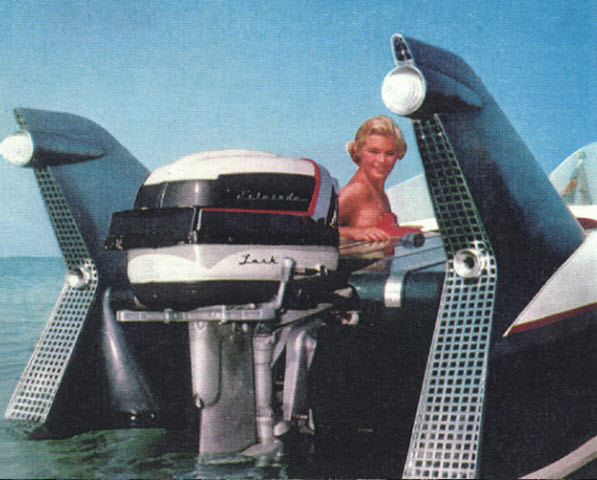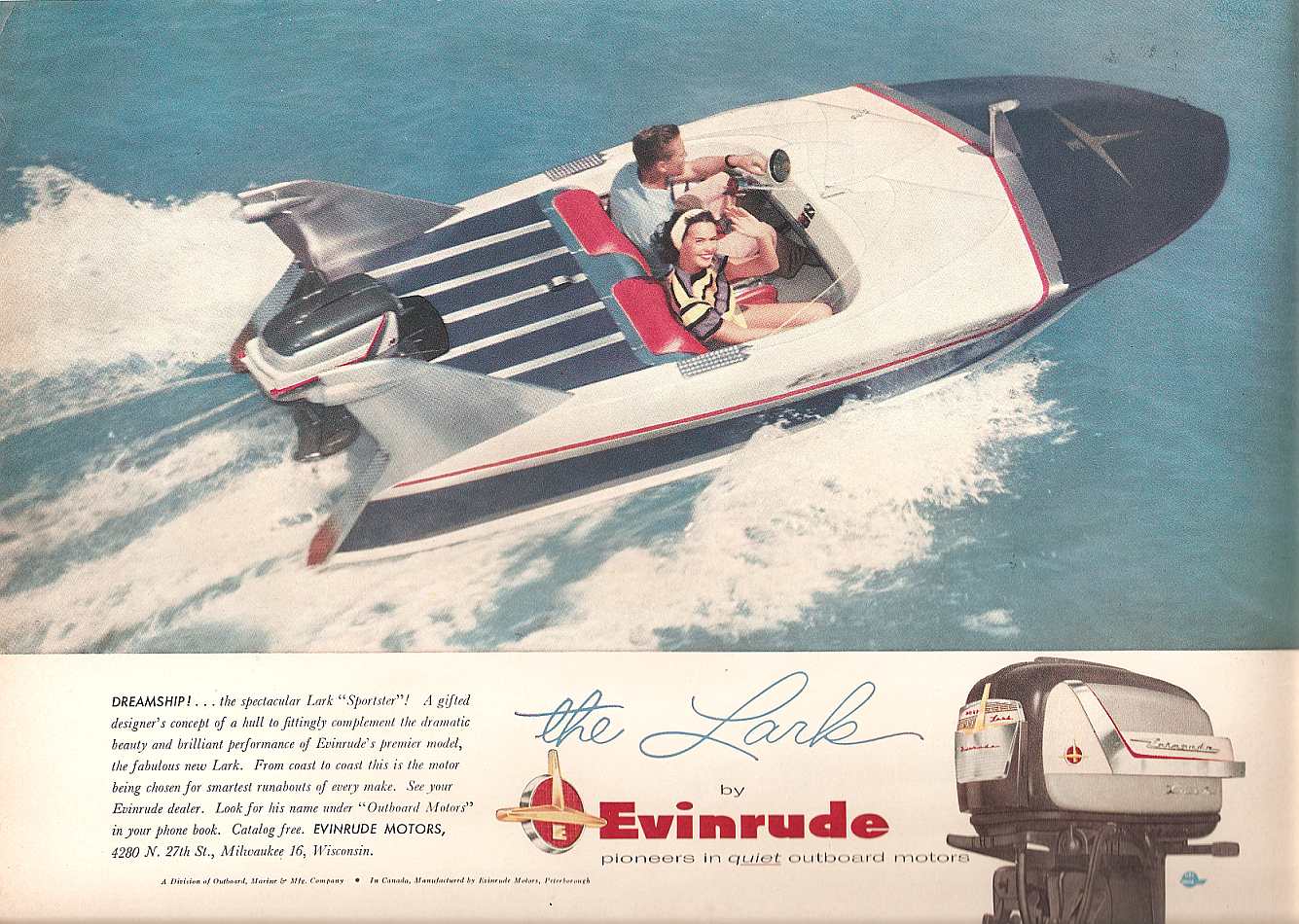The first image that comes to mind when most people hear the word Cadillac, is usually a big squishy luxury automobile with power everything and, in terms of classic cars, big tail fins.
In 1957, there was another kind of Cadillac.
The story of the Cadillac Sea Lark begins more than 60 years earlier. In 1893, the Wagemaker Company opened for business in Grand Rapids, Michigan, building roll top desks, filing cabinets, and other office furniture.
Over the decades that followed, the Wagemaker Company watched as the automotive industry grew into the dominant Michigan economy. The Detroit automakers were building plants all over the state and the money was flowing like champagne on New Year's Eve. Ray Wagemaker wanted to get in on it.
Because automobiles were unlikely to ever be built out of wood, the Wagemaker Company pursued other avenues for diversifying their business. The logical middle ground between wooden office furniture and the booming automotive industry, was boats. Wood boats.
In 1953, Wagemaker started the Cadillac Marine and Boat Company in Cadillac, Michigan. They also bought U.S. Molded Shapes in Grand Rapids, a company that made cold molded boat hulls.
Using their two new subsidiaries, Wagemaker took the cold molded hulls from Grand Rapids and finished them up at the plant in Cadillac. The boats were then sold to the public as the Wagemaker Wolverine.
Business was great. In two years, they were producing 5,500 boats per year in a state of the art, 100,000 square foot facility.
By 1955, the boating industry was rapidly changing. Wooden boat companies were dying and the new fiberglass revolution was beginning to take hold. The Wagemaker Company knew they would have to change with times in order to survive. That's when they started Empire Boats.
Empire Boats was a hybrid of the fiberglass revolution, half in step with cutting edge technology and half in step with traditional boat building, they manufactured boats that were a mixture of aluminum, wood, and fiberglass. Apparently, their business motto was, “We'll try anything”. It was a hectic time for boat builders in those years.
But boat builders weren't the only ones going through growing pains. The ability of fiberglass to incorporate the sweeping curves and big tail fins that were all the rage in the auto industry also had an effect on the design of outboard motors.
The new generation of outboards were no longer dainty or conservative looking. They were flashy, dressed up in chrome, and had aerodynamic cowls that looked fast.

So how does all this get us back to the Cadillac Sea Lark?
It starts with a man named Brooks Stevens who was at the forefront of the post war design revolution. As an industrial artist, he was the man responsible for Harley Davidson's redesign, the Studebaker Grand Turismo Hawk, and the engine design for Briggs and Stratton. (Less impressively, he would also be responsible for the Oscar Meyer Weiner Mobile).
In 1957, Evinrude hired Stevens to design a boat specifically to complement their new Lark outboard motors. What Stevens came up with was possibly the weirdest and wildest boat anyone had ever seen up to that day. The Sea Lark.

With tail fins that stood half a mile high, only two seats, and a double bubble windscreen, the Sea Lark was sure to raise a few eyebrows.
The Cadillac Marine and Boat Company was commissioned to build the wood, fiberglass, and aluminum curiosity for the world famous Chicago and New York International Boat Shows.
In the same vein that car makers build concept cars today for the big auto shows, the Sea Lark was a concept boat. Cadillac Boats built one for each show, then never built another one again.

More than fifty years later, not much is known about the history of these two rare gems. One was discovered and now lives in the home of private collector.
The other? No one knows. People have been searching for years.
Maybe it will turn up on Craigslist for $300 in Omaha. Maybe it's buried under decades of mulch and blackberry brambles behind someone's farm in Tuscaloosa. Maybe it met its maker at a landfill in Portland. Maybe its already been discovered and someone is keeping quiet about it.
If you happen to find it, just remember, I will happily give you $300 for it.
Editor's note: I love glassic boats, but I'm not a very good historian. Among the errors in this article are: The boat show was in 1956, not 1957, and it turns out there may have been as many as five Sea Larks built.
While the general idea that it's a very cool boat, one of the first highly prized glassic boats, and a very rare boat, are all accurate, my reporting may not have been.
Thanks to all of those who selflessly devote so much time to building a body of more accurate knowledge here on this website, specifically Handy Andy, Andreas, and Lee Wangstadt who have more knowledge of classic boats in their little toes than I have in my whole brain.









